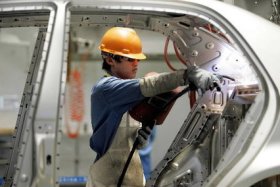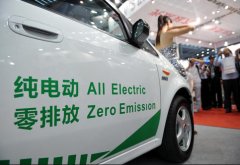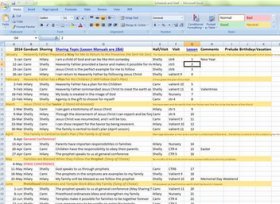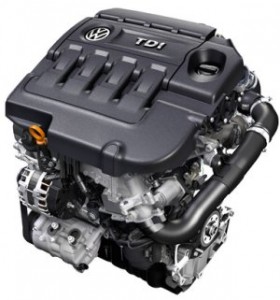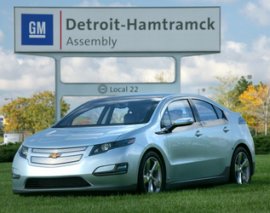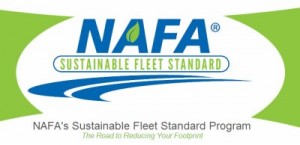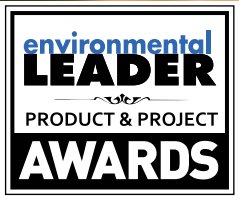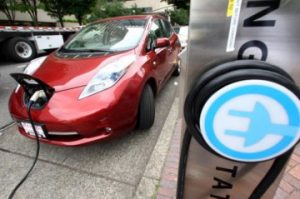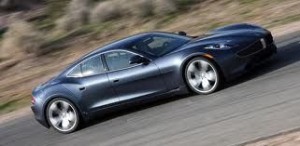 Fisker Automotive’s new owner is sorting through its assets to determine a new business plan. Chinese auto supplier Wanxiang, which funded Fisker out of bankruptcy a few months ago, loves the product but isn’t sure about the name. Fisker president Roger Brown described the cars as “rock stars,” but isn’t sure if the company will keep the Fisker Automotive name. The Fisker Karma plug-in hybrid will resurrect by the middle of next year.
Fisker Automotive’s new owner is sorting through its assets to determine a new business plan. Chinese auto supplier Wanxiang, which funded Fisker out of bankruptcy a few months ago, loves the product but isn’t sure about the name. Fisker president Roger Brown described the cars as “rock stars,” but isn’t sure if the company will keep the Fisker Automotive name. The Fisker Karma plug-in hybrid will resurrect by the middle of next year.
Soon after the Karma returns, Fisker is likely to launch the Surf, a $100,000 version that looks like a station wagon; and the Atlantic, smaller sedan that will go for about $50,000. The Surf will be coming out in 2016 and the Atlantic should be released in 2017. Fisker only has 25 employees left out of its original 150.
And in other clean transportation news…….
- ClipperCreek co-founder and former president Dave Packard has left his electric vehicle charger company and has been hired to run competitor ChargePoint’s utilities business development. Packard was part of bringing ClipperCreek to life in 2006 and was part of the EV industry in its early days. Packard joined the EV market in the early 1990s as VP of Sales at EPTI, a start-up, rapid battery charging company.
- Earlier this month, Florida Power & Light Co. (FPL) accepted the US Environmental Agency’s Clean Air Excellence Award for 2014; that award honors innovative programs that benefit communities, the environment, and the economy. The EPA recognized FPL’s deployment of fuel-efficient vehicle technology. NAFA President and FPL Fleet Services Manager Claude Masters, CAFM, and In-Home Technologies and Electric Vehicles Director Brian Hanrahan accepted the award on FPL’s behalf during the ceremonies held in Washington, D.C.
- The Federal Trade Commission (FTC) has tipped its hat toward Tesla Motors in the corporate stores vs. franchised dealer stores legislative battle. In its “Competition Matters” blog, FTC said that it supports the Tesla direct sales approach, comparing it to past technological advances in consumer-business relations.
- A panel of top Canadian automotive journalists selected the Accord Hybrid from among five other category winners as the winner of its 2014 Canadian Green Car Award; they think that its the vehicle that best combines environmental benefits and mass-market appeal.
- The US Dept. of Energy’s Clean Cities is proud to announce the expansion of the Plug-in Electric Vehicle Readiness Scorecard, a key tool for helping communities evaluate their PEV readiness efforts. The PEV Readiness Scorecard is a detailed, interactive online assessment tool that collects information about a community’s PEV readiness, provides feedback on its progress, and offers guidance for improvement.
- Ford has launched the Ford Fleet Purchase Planner™ to help businesses identify the lowest cost and emission option when revamping their company fleet, while still meeting business goals. Developed by Ford researchers, the analytical tool factors in employees’ individual driving habits, terrain traveled, and environmental impact, to produce the optimal solution.
- Classic Chevrolet in Grapevine, Texas, (the largest Chevrolet dealership in the US), has invested a million dollars in its own compressed natural gas fueling station. Chevrolet offers a heavy-duty pickup that operates on both gasoline and natural gas; and this fall, it will offer a bi-fuel version of the Impala.
- Los Angeles, Paris, and Tokyo are expected by Navigant Research to be the largest markets for selling light duty electric vehicles. The research firm thinks that the US will be largest market over the next 10 years with its EV sales exceeding 514,000 in 2023.
- Recargo, Inc., is celebrating the return of its research managing director, Norman Haijar, who just finished a record-braking 12,000-plus mile journey around the US while driving a Tesla Model S. Haijar was able to drive around the four corners of the US without paying anything in fuel costs. Take a look at this map.


